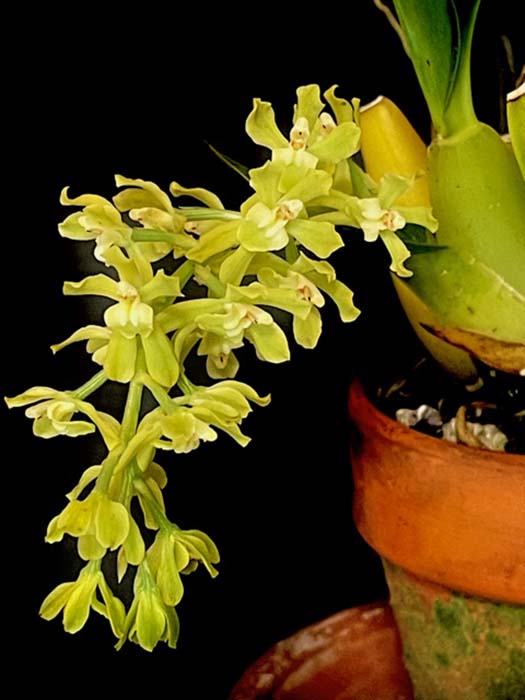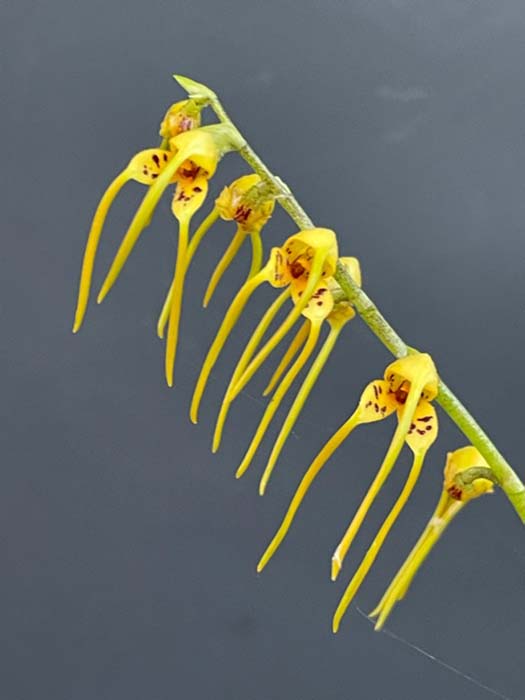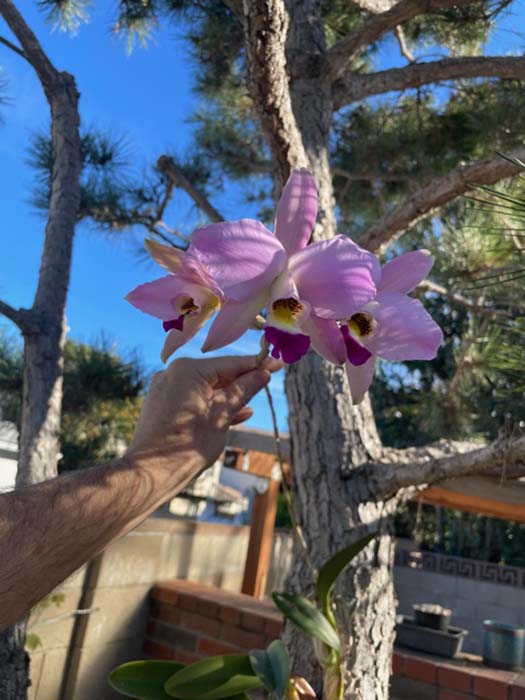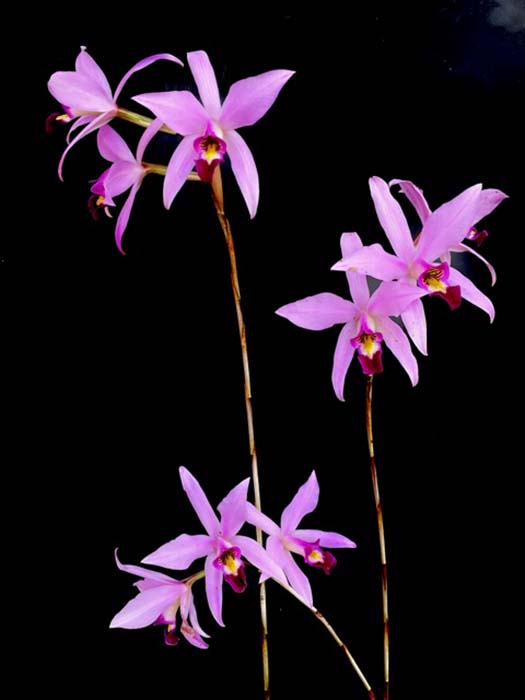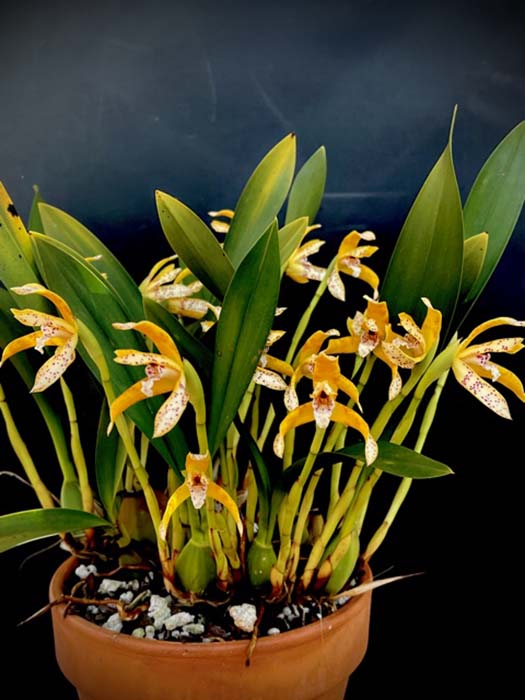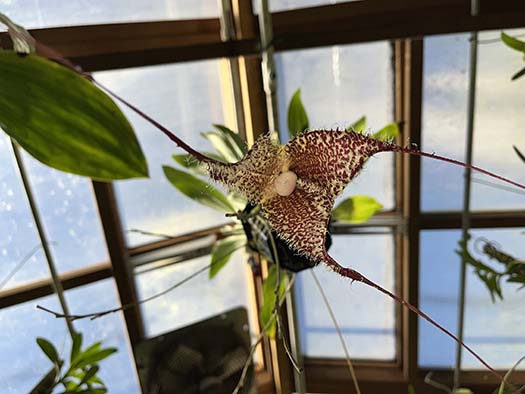February 2024
From Kurt Shanebeck:
|
|
Outdoors coastal, north of Los Angeles: |
|
Laelia ancepsFrom the mountains of Mexico and Honduras. Growing mounted. The second photo is a line bred strain growing mounted on a pine tree. I have often heard it said that orchids don’t like pine trees because of their resinous nature, but since it was the only tree in my yard otherwise capable of hosting an orchid I thought I would give it a try. It has done very well and doesn’t seem to be bothered in the least and displaying vigorous root growth along the rough bark |
|
Maxillaria pictaFrom Brazil and Argentina. Growing potted with moderately bright light. Always a reliable bloomer
|
|
From Arnold Markman:
|
|
Intermediate Greenhouse, coastal San Diego area: |
|
 Coelogyne lawrencianaMisted daily and watered every 2-3 days. It was in a hanging basket but go so heavy and lopsided that I put the basket in a clay pot.
|
|
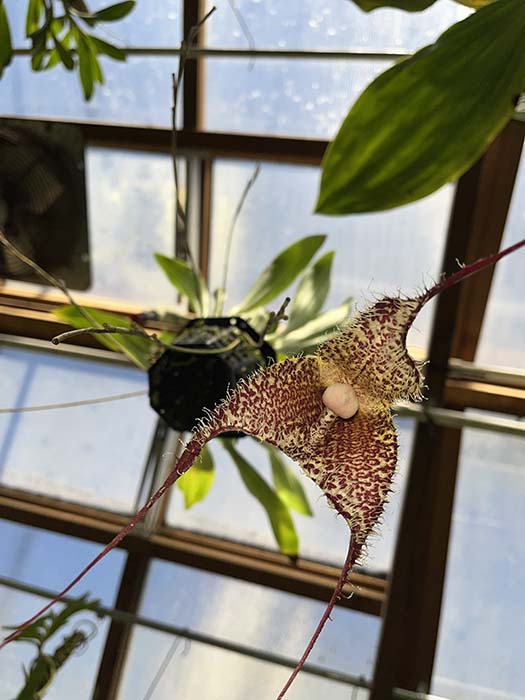 |
|
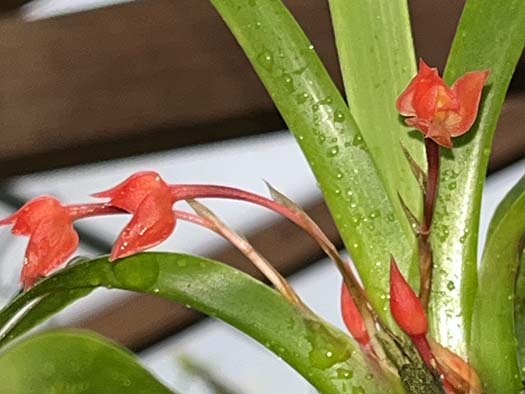 Maxillaria coccineaMounted. Watered every day or at least every other day. |
|
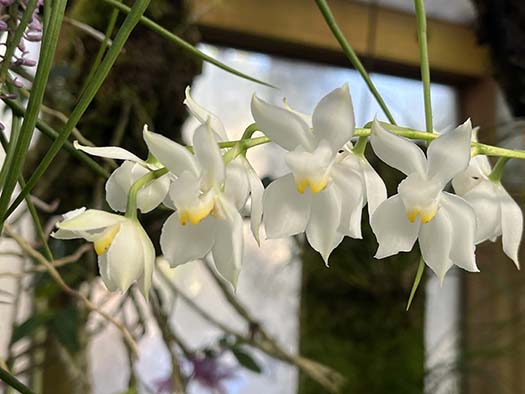 Odontoglossum pulchellumMounted, watered daily |
|
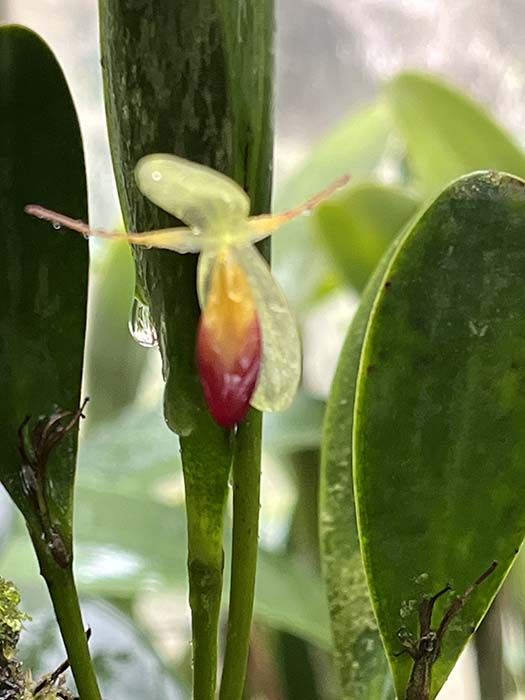 |
|
Pleurothallis medinae |
|
Pleurothallis palliolataI water it every day. |
|
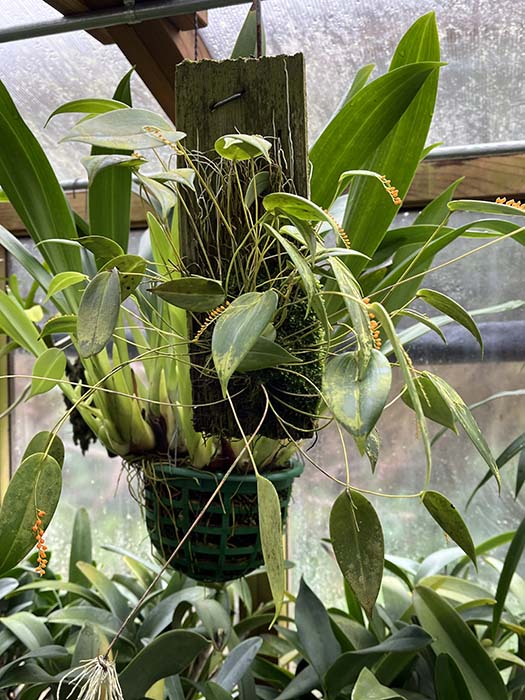
Pleurothallis truncataMounted on slab ( in front of Eria in hanging basket). Watered daily |
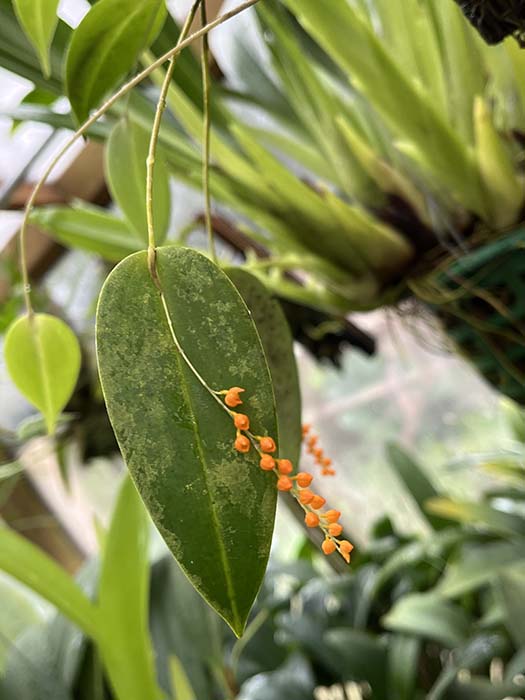 |
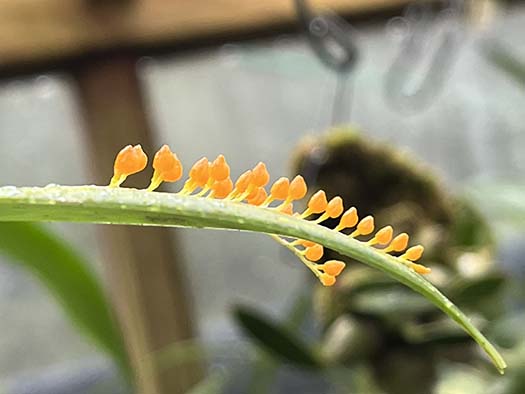 |
|

Scaphosepalum decorumMounted. Watered daily |
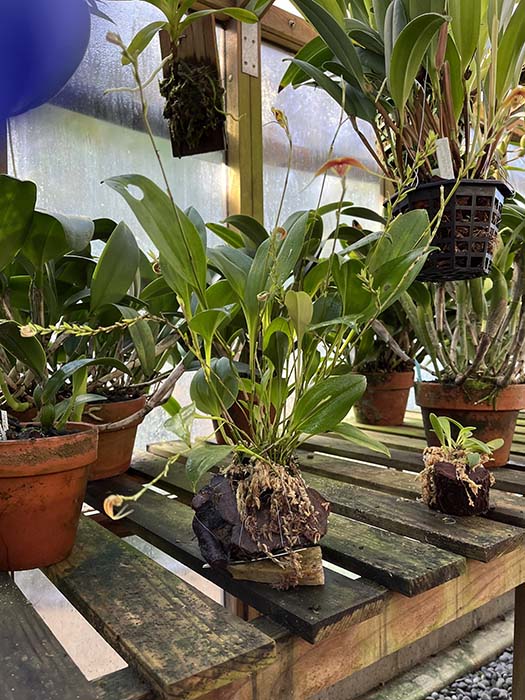 |
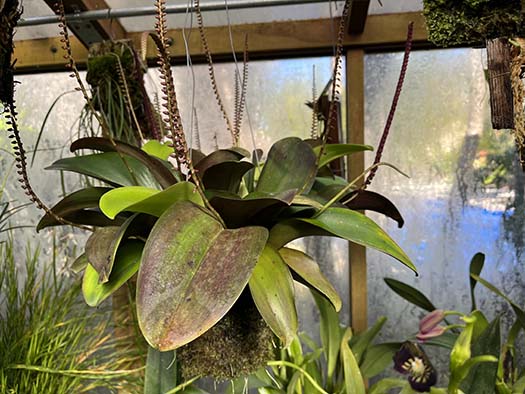
Stelis dalstroemiiThe plant has over 10 inflorescences and each one carries about 100 tiny-about 1-2mm —-size flowers. I water it daily. |
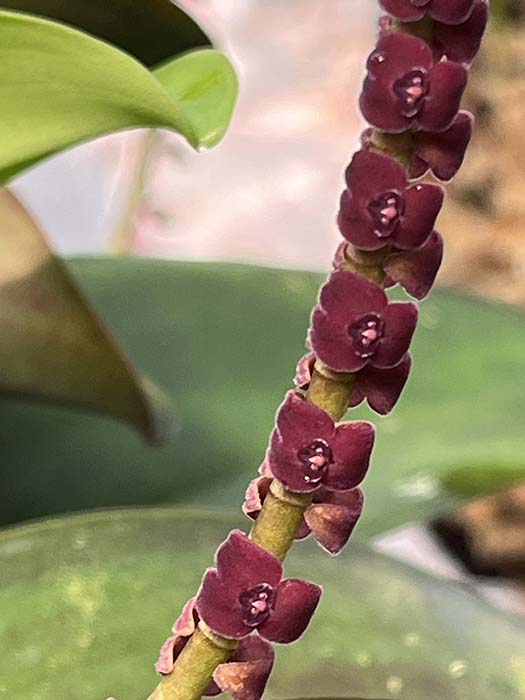 |
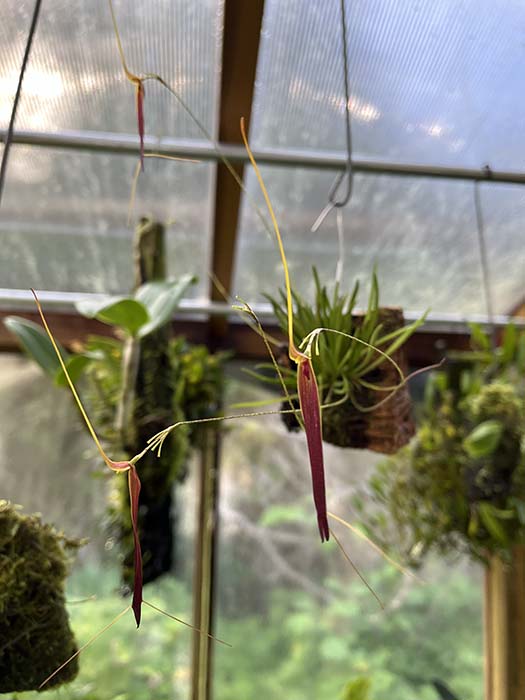 |
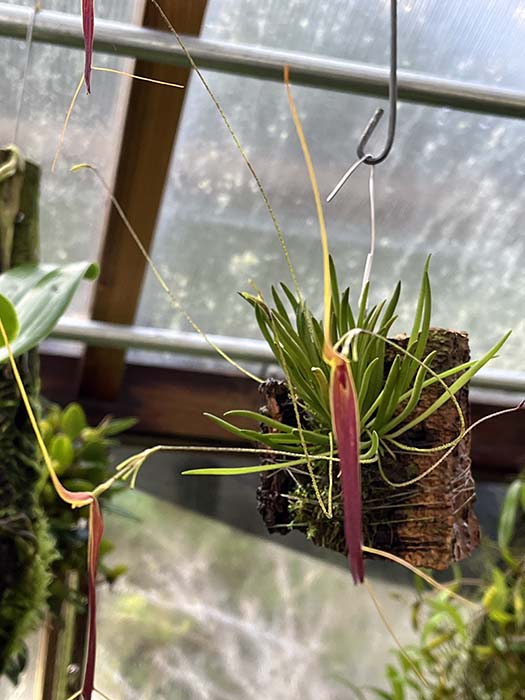 |
Trisetella klingeriiA cute little beauty. Watered daily |
|
From Scott McGregor:All orchids grown outdoors, coastal southern California |
|
Epidedrum marmoratumAn odd Epidendrum with very long lasting, but alas not fragrant, flowers. |
|
Isabelia violaceaA genus of three mini species, all worth growing. I. violacea has the largest flowers, but they only last a few days. Grows best mounted and bright. |
Isochilus aurantiacusMore shy-flowering than other Isochilus species, but makes up for it with bright orange-red flowers. Likes to grow bright and moist-- mine grows mounted with a chunk of sphagnum so it doesn’t dry out too quickly. |
Laelia anceps v. lineataLaelia anceps, with color feathering in the petals in variety lineata.
|
|
From Roberta Fox:Coastal southern California |
|
Outside in the Back Yard: |
|
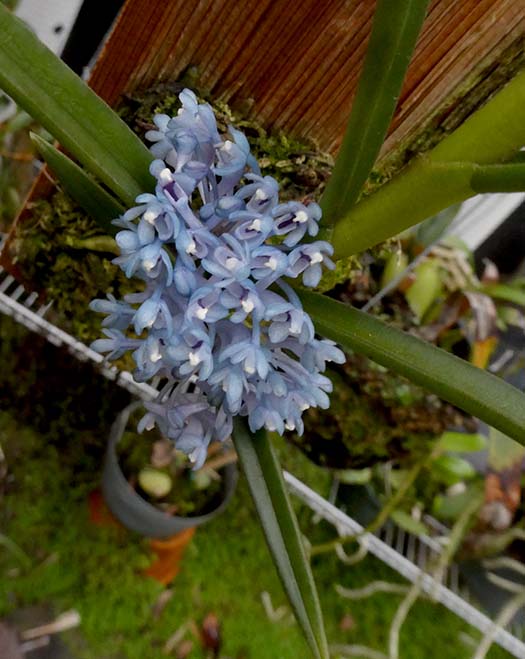 |
|
Cleisocentron gokusingiiFrom Borneo. Compare with Cleisocentron merrillianum (which I showed you last month) this species has much shorter, semi-terete leaves. The flowers look very similar, truly blue. This can bloom several times of year. The blue is much more saturated in winter bloomings, tending to be more blue-gray in summer. So not only does it tolorate cool weather, it likes it! |
|
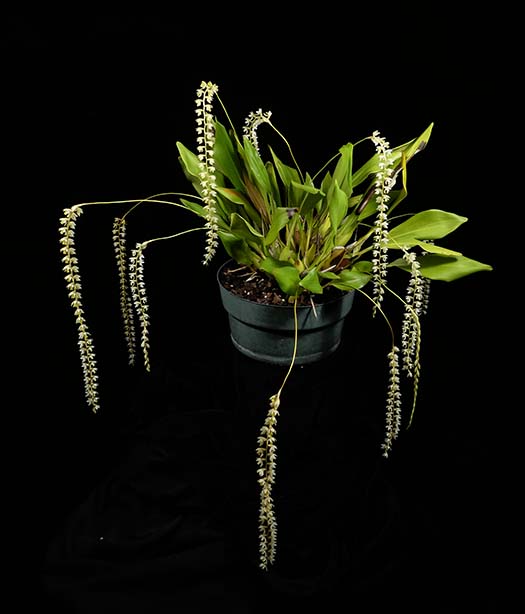
Dendrochilum cobbianumNative to the Philippines, elevation 1400-2400 m . The graceful inflorescences are reminiscent of strings of pearls. |
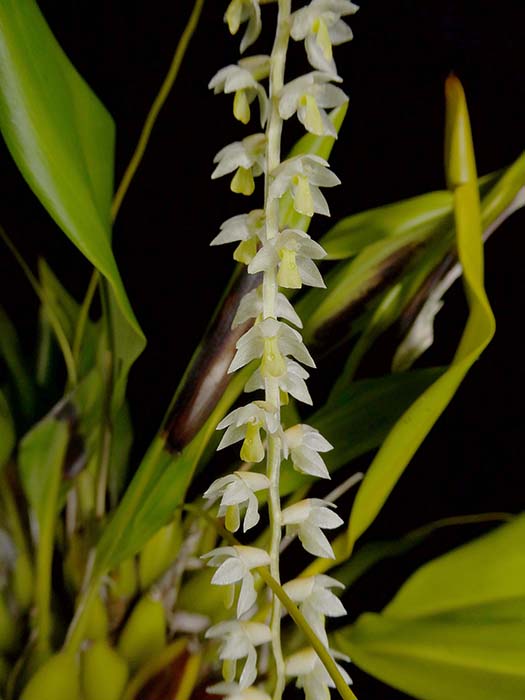 |
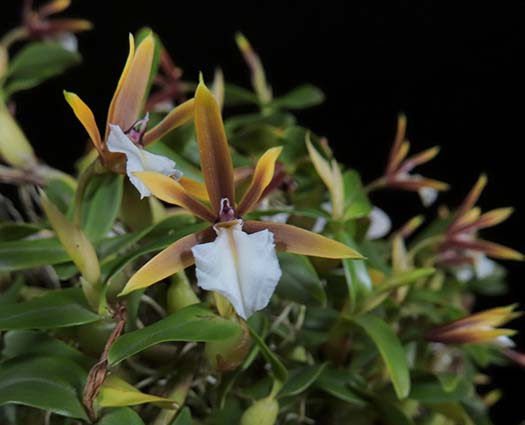
Dinema polybulbonThis prolific Epidendum relative is native to southern Mexico, through much of Central America. It tends to ramble, I am trying to "train" the new growths so that they will eventually form a ball. |
|
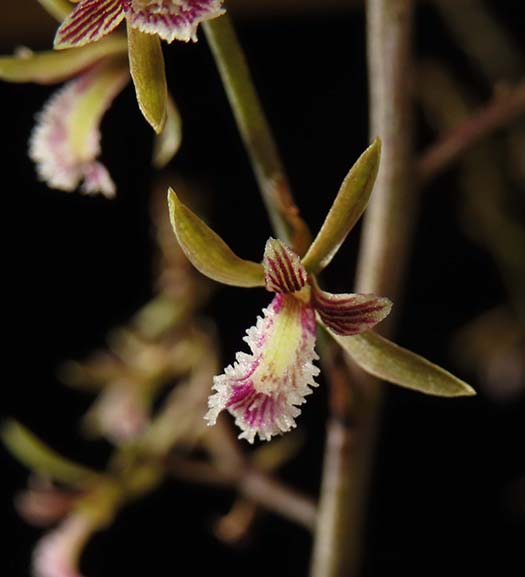 |
|
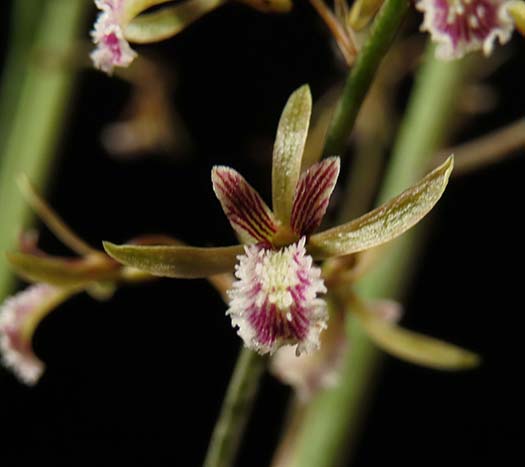 |
|
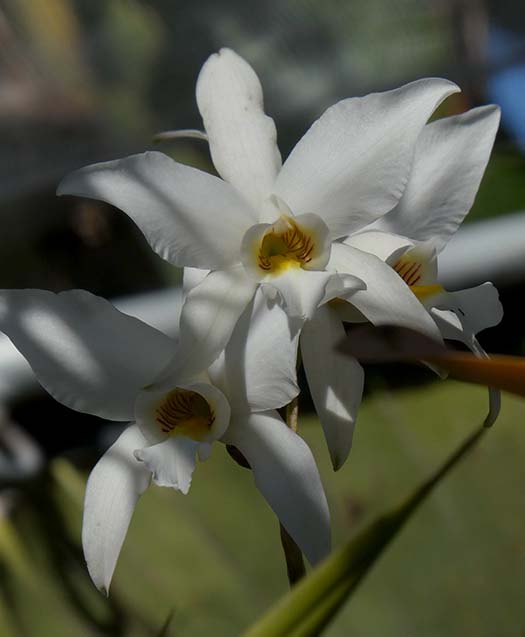
Laelia ancepsGetting toward the end of the season, these are among the late bloomers. Above is a semi-alba or albescent form, with white flowers but red lines in the throat. To the righ is the veitchna (coerulea) form. |
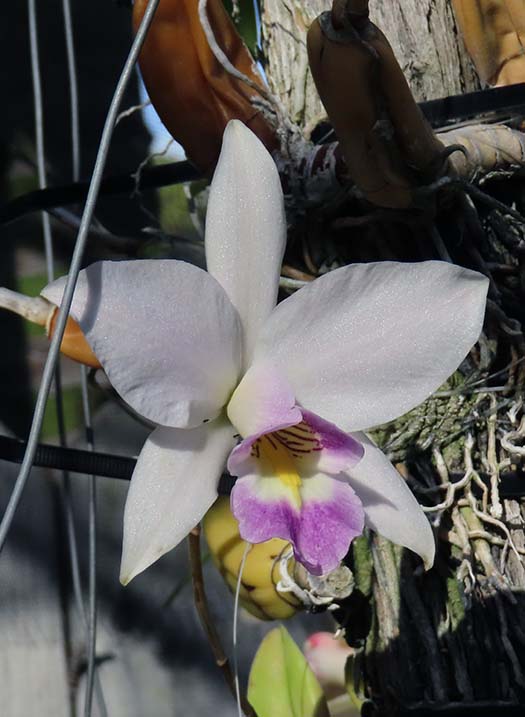 |
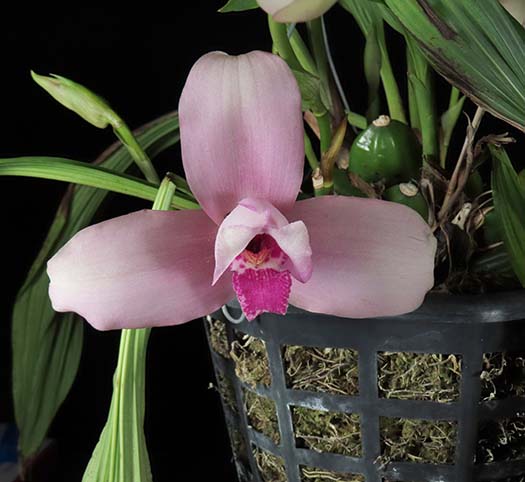 |
|
Lycaste virginalis (skinneri)Depending on the cultivar, flowers range from white to soft pink. This species is in the background of all the big, round Lycaste hybrids. It seems to have really liked last winter's rain and cool spring/summer.- this is the best bloomng that I have had in many years. Behind these open flowers are 4 more buds, so the show will continue for awhile. The species is native to southern Mexico and northern Central America, elevation 1500-2100 m. |
|
 |
|
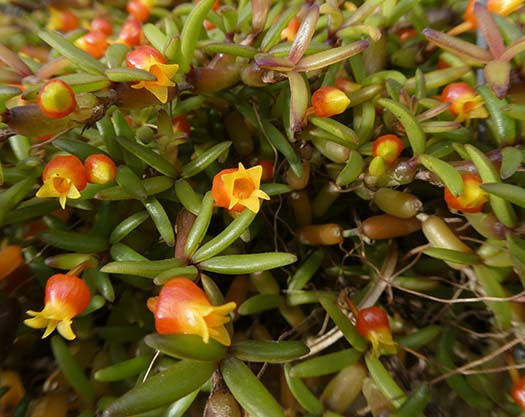 |
|
Oncidium endocharisNative to southern Mexico, through Central America, to Colombia, elevation 1350-2200 m. Flowers are about 3/4 inch, with lovely color contrast.
|
|
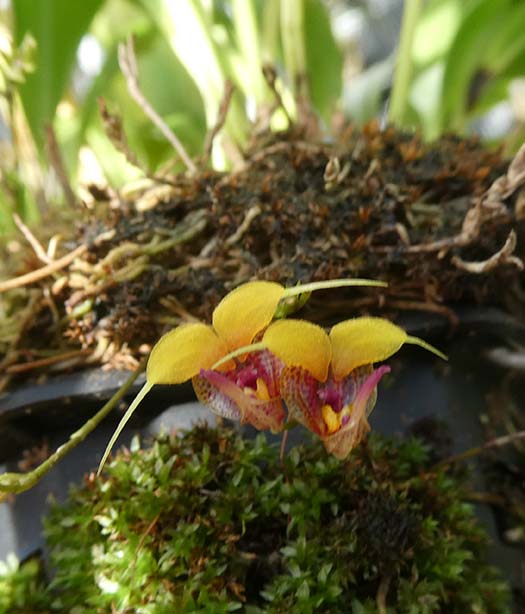
Scaphosepalum swertifolium ssp. exiguumDon't cut spikes, they can rebloom for several years! Intricate flowers are only about 3/8 inch, but they bloom in profusion. Native to Ecuador, elevation to 2200 m. |
|
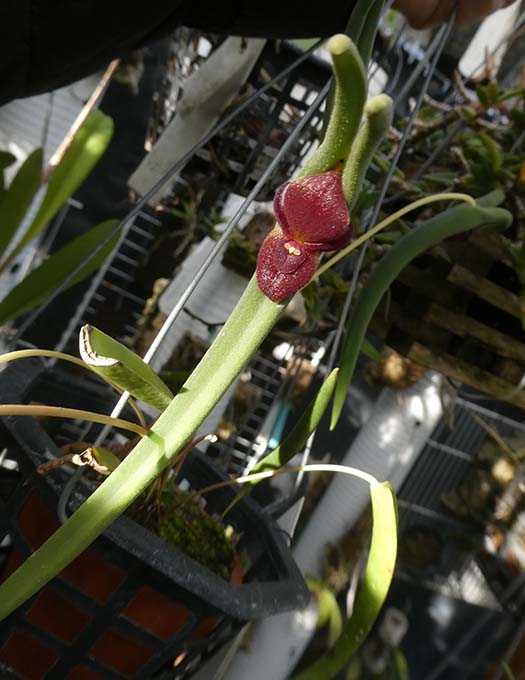
Pleurothallis dilemmaNative to Ecuador, elevations 1800-2000 m. The leaves look to me very much like green beans, with two little horns. Orchid grower extraordinaire Cynthia Hill explains the inspiration for the name - those are the "horns of a dilemma".
|
|
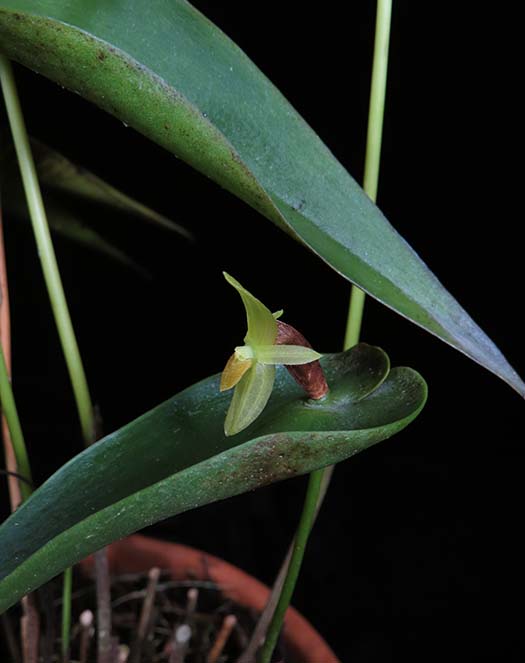
Pleurothallis radulaNative to Costa Rica, elevation 1500-1900 m. Flowers are produced repeatedly from the inflorescence that holds them well above the leaf, sometimes in pairs. |
|
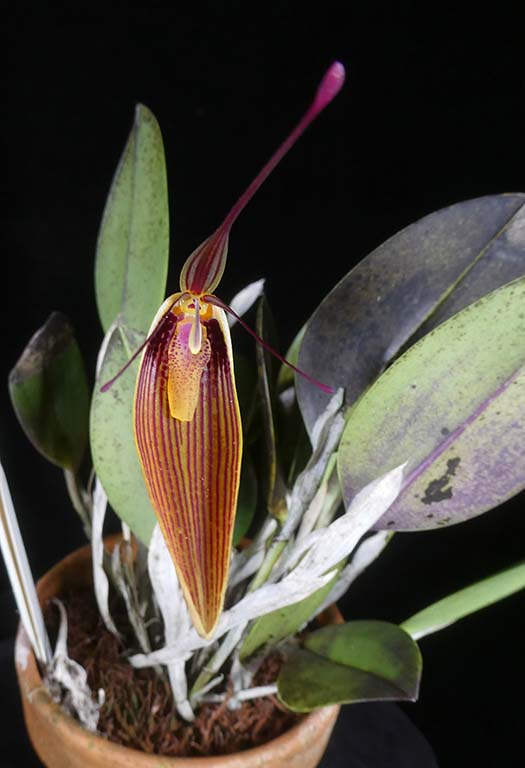
Restrepia antennifera 'Cow Hollow'The flower on this one is very large for the genus. Native to Colombia, Venezuela and Ecuador, elevation 2000-3500 m. |
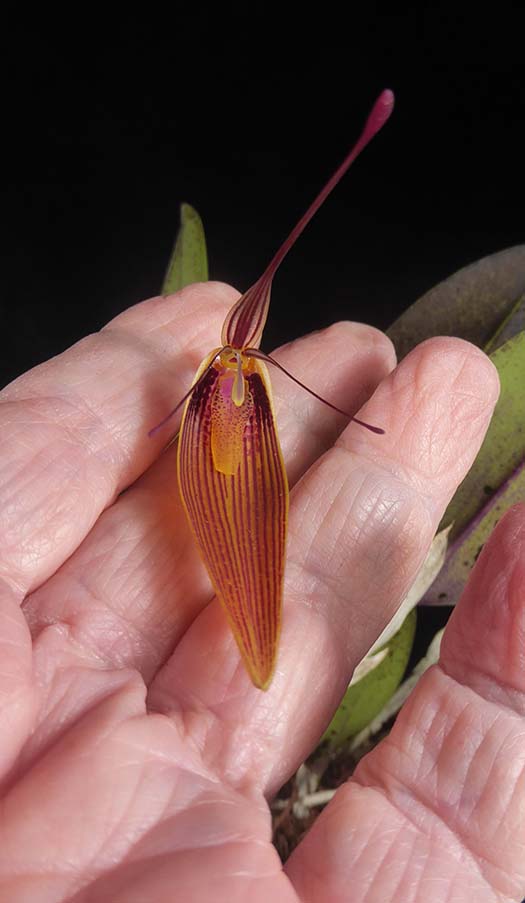 |
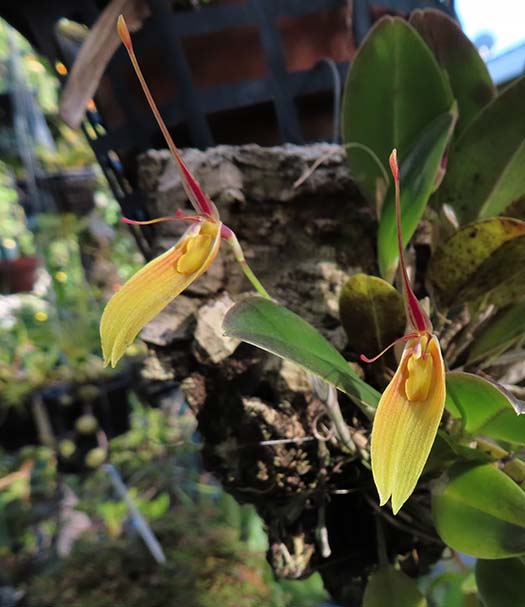 Restrepia jesupianaA bit of sunshine. Native to Venezuela, 2300-2800 m |
|
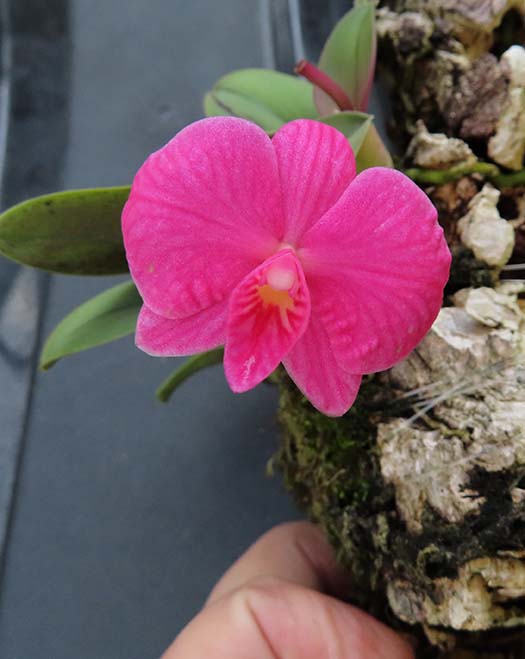 |
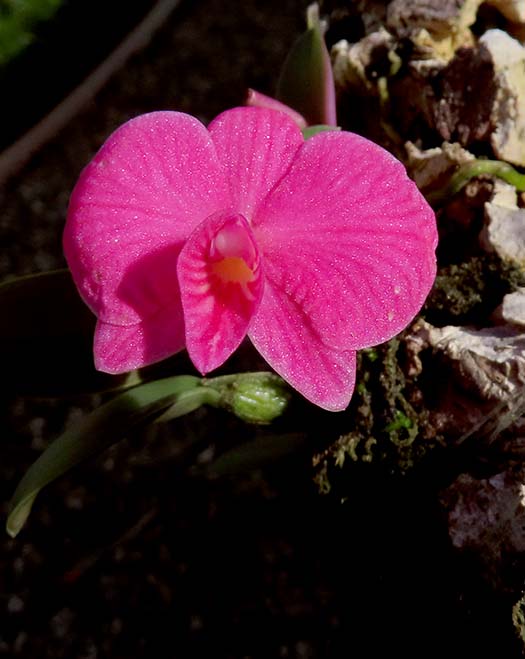 |
Cattleya (Sophronitis) wittigianaNative to Brazil. The photo on the right was taken in bright sunlight, and the flower glistens like diamond dust. The image doesn't really do it justice, the sparkles are a challenge to photograph. |
|
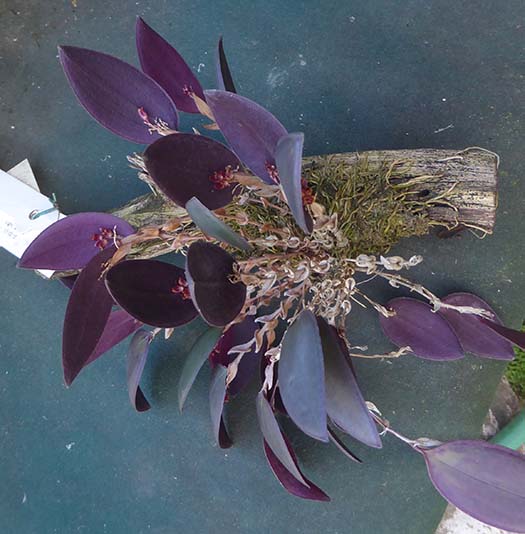
Trichosalpinx sp. (Peru)No species ID on this one. It flowers repeatedly from the same inflorescence - you can see the bracts where the old flowers were. The flowers hide under the leaves which are dark green on top and purple underneath. One has to be sure to look under the leaves frequently, to se the little blooms. |
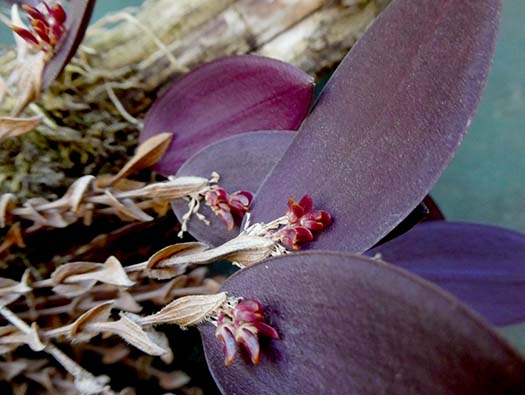 |
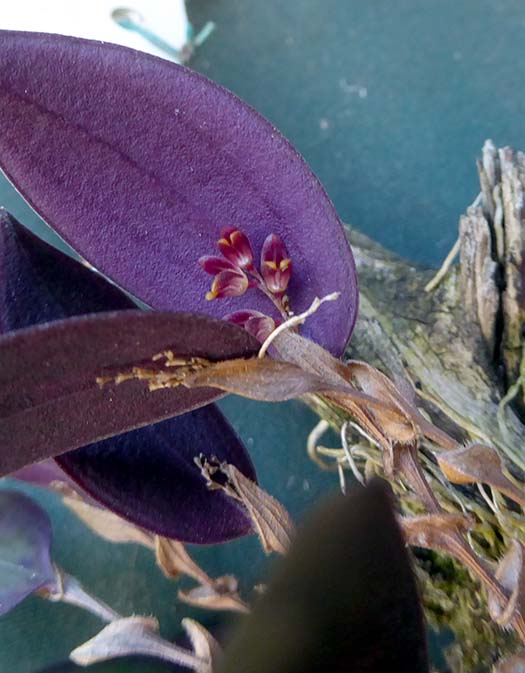 |
|
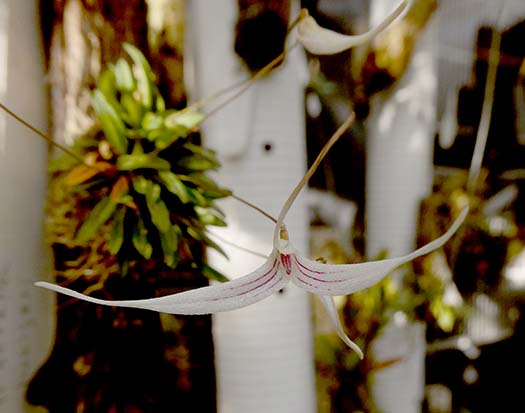 |
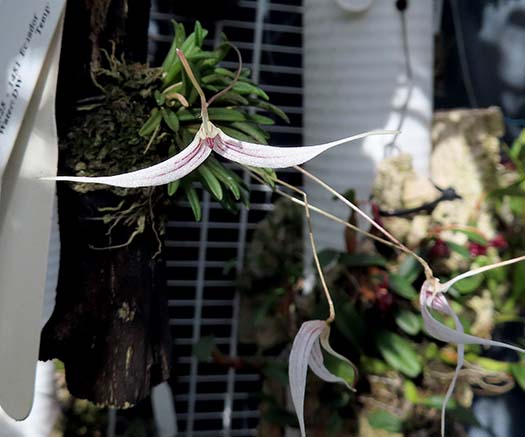 |
Trisetella hoeijeriFlowers remind me of little birds. They seem to float, on the hairlike inflorescence. Native to Ecuador at about 1800 m. |
|
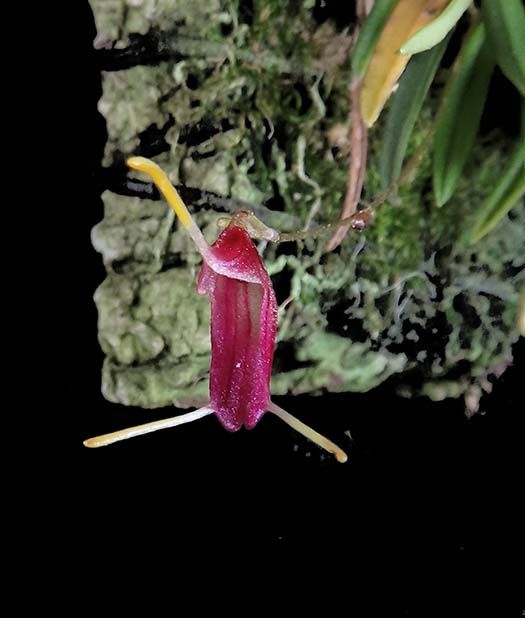
Trisetella triglochinI saw this along the Rio Negro in Brazil in the Amazonian tropics but it also grows on both sides of the Andes. This one grows on my patio, clearly having no problem with the winter cold. |
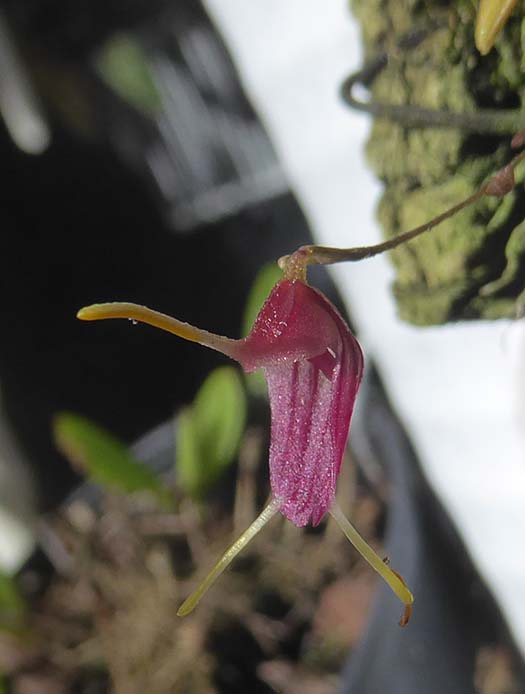 |
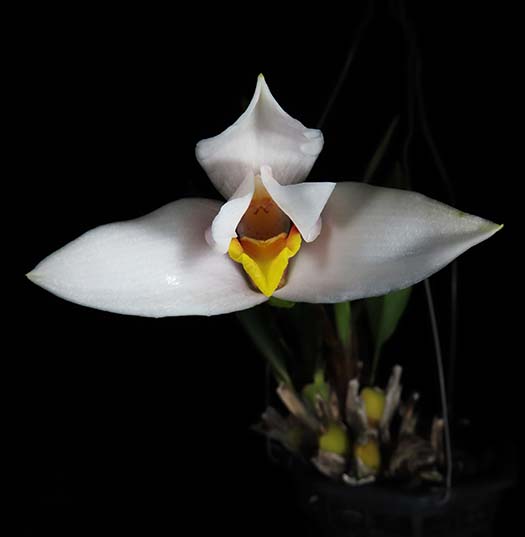
Maxillaria lehmanniiNative to Ecuador. Flowers are about 2.5 inches across, with heavy, waxy substance. |
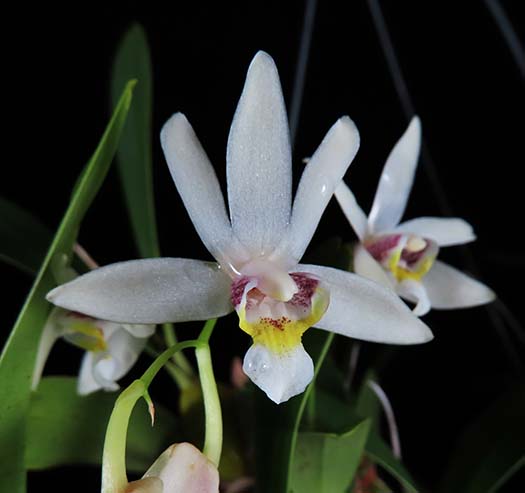
Epigeneium triflorum var. orientaleBlooms 2 or 3 times a year. Growth habit is mostly into the air, like other Epigeneiums. Native to Java, elevation 1000-1700 m. The genus has been lumped into Dendrobium... for now. |
In the greenhouse... |
|
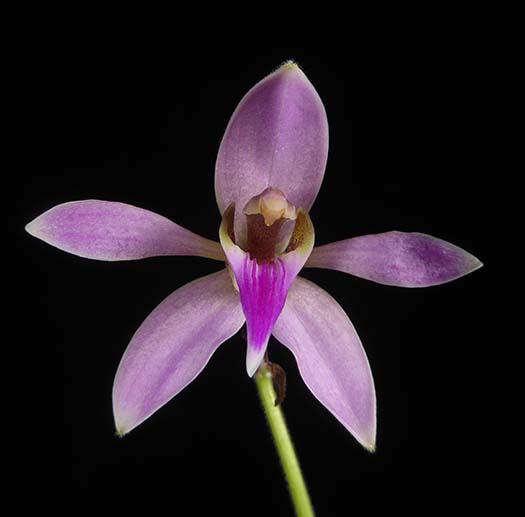
Ancistrochilus rothschildianusFrom equatorial west Africa. The pseudobulbs are shaped a bit like Hershey's Kisses. They're deciduous once the spike develops. It benefits from being somewhat drier in winter, but still needs light watering. |
|
